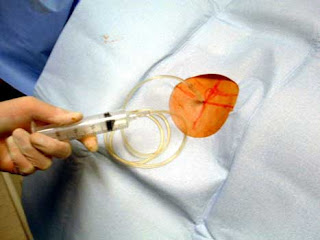Arthrography Pain, Types, Uses, Complications or Side effects
First Knee arthography were carried out by Robinson and Werndorff in 1905 after insufflation of oxygen in the knee joint. Arthrography using gas as a negative contrast agent has remained only a method used for several decades. Common Indications for all arthrographic procedures are first visualized internally that can not be properly identified on conventional X-rays. This includes the capsule, synovium, cartilage structures and internal joint and collateral tendons. Secondly, it is often necessary to obtain synovial fluid for its assessment in diagnostic laboratories. The arthrographic contraindications other side are superficial skin infections and severe allergic reactions for administration of contrast.
Magnetic resonance imaging (MRI) replaces arthrography in most cases for displaying soft tissues of the temporomandibular joint (TMJ). Arthrography can still provide valuable information which is not available from any other imaging technique. It's just an imaging technique that shows disk perforations in real time as the operator can see the dye escape from the inferior to the superior joint space during the initial injection. The usual technique involves injection of water-soluble, iodized contrast media in the lower joint space under fluoroscopy. Visual arthrofluoroscopy can clearly show the various stages of disk displacement with or without reduction, but fails to show internal or lateral displacement of the disc. Potential complications of arthrography include allergic reaction to contrast, infection and pain and swelling due to invasive technique used during the procedure.
Arthrography consists of two basic types mainly used for evaluation of internal structures of joint. CT arthrogrpahy in which 2-3ml of contrast media is used followed by incorporating 5-10ml of gas usually oxygen or carbon dioxide depending upon patient tolerability. After this procudre a double contrast athrogram is obtained. This technique is called as Ct arthrograpy. Similarly, MR arthrography has many advantages over conventional MRI especially in case of collateral ligaments, synovial and capsular pathology, articular cartilage and osteochoral injuries. In this type of arthrograpy about 8-15ml of saline followed by incorporation of gadolininium DPTA into joint directly.
Pain major undesirable phenomenon during this procedure especially when your health care provide is performing procedural arthrography. In case of case severe pain local or general anesthesia might require to inhibit pain sensation. A major drawback associated with arthrography is that is invasive procedure that may cause severe pain or allergic reaction to contrast medium used for enhanced imaging.
Some commonly reported complications associated with arthrography are listed below
Magnetic resonance imaging (MRI) replaces arthrography in most cases for displaying soft tissues of the temporomandibular joint (TMJ). Arthrography can still provide valuable information which is not available from any other imaging technique. It's just an imaging technique that shows disk perforations in real time as the operator can see the dye escape from the inferior to the superior joint space during the initial injection. The usual technique involves injection of water-soluble, iodized contrast media in the lower joint space under fluoroscopy. Visual arthrofluoroscopy can clearly show the various stages of disk displacement with or without reduction, but fails to show internal or lateral displacement of the disc. Potential complications of arthrography include allergic reaction to contrast, infection and pain and swelling due to invasive technique used during the procedure.
Arthrography consists of two basic types mainly used for evaluation of internal structures of joint. CT arthrogrpahy in which 2-3ml of contrast media is used followed by incorporating 5-10ml of gas usually oxygen or carbon dioxide depending upon patient tolerability. After this procudre a double contrast athrogram is obtained. This technique is called as Ct arthrograpy. Similarly, MR arthrography has many advantages over conventional MRI especially in case of collateral ligaments, synovial and capsular pathology, articular cartilage and osteochoral injuries. In this type of arthrograpy about 8-15ml of saline followed by incorporation of gadolininium DPTA into joint directly.
Pain major undesirable phenomenon during this procedure especially when your health care provide is performing procedural arthrography. In case of case severe pain local or general anesthesia might require to inhibit pain sensation. A major drawback associated with arthrography is that is invasive procedure that may cause severe pain or allergic reaction to contrast medium used for enhanced imaging.
Arthrography Complications or Side effects
Some commonly reported complications associated with arthrography are listed below
- High risk of infection
- Deep vein thrombosis
- Complex regional pain syndrome
- Iatrogenic injury
- Neurological or nerve injury
- Anesthesia associated complications
- Compartment syndrome
- Vascular Injury
- Extravasation
- Broken cartilage
- Scuffing
Arthrography Uses/Indications
Arthrography is mainly performed to investigate areas such as
- Collateral ligaments
- Synovial
- Capsular pathology
- Articular cartilage
- Osteochoral injuries
Arthrography Pain, Types, Uses, Complications or Side effects
 Reviewed by Simon Albert
on
December 31, 2019
Rating:
Reviewed by Simon Albert
on
December 31, 2019
Rating:
 Reviewed by Simon Albert
on
December 31, 2019
Rating:
Reviewed by Simon Albert
on
December 31, 2019
Rating:












